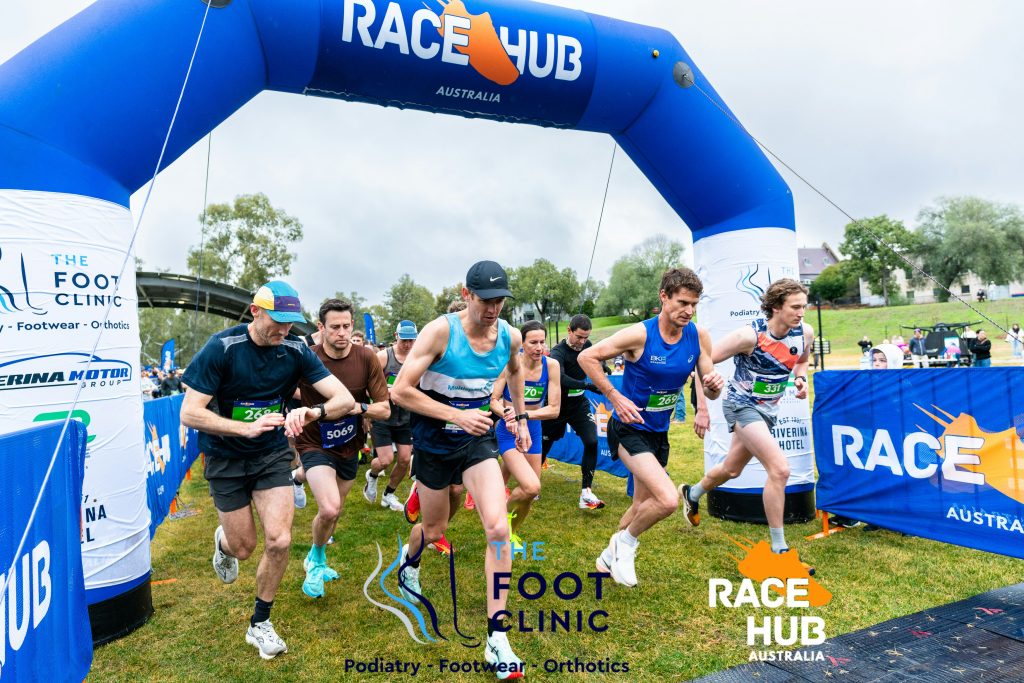Why Amateur Runners Get Injured
Many new or casual runners jump straight into training without giving much thought to their feet, shoes, or running style. The feet absorb forces equivalent to 2–3 times your body weight with every step, so small errors can compound into major problems. Some common risk factors we see include:
- Rapid increase in mileage or intensity
Going from 0 to 5km three times a week without a gradual build-up puts huge strain on muscles, joints, and tendons. - Poor footwear choices
Worn-out or inappropriate shoes fail to support your feet and can change your biomechanics, increasing the risk of pain or injury. - Biomechanical imbalances
Flat feet, high arches, or unstable ankles can alter your gait, creating extra stress on the knees, hips, and lower back. - Inadequate recovery
Rest days are when your body adapts and strengthens. Ignoring them can lead to fatigue-related injuries like shin splints or stress fractures.
Common Injuries in Amateur Runners
From a podiatry perspective, the most common running-related injuries we see include:
- Plantar Fasciitis – Heel pain caused by overloading the plantar fascia, often due to poor footwear or sudden mileage increases.
- Shin Splints (Medial Tibial Stress Syndrome) – Pain along the shin bone from repetitive impact and poor lower limb mechanics.
- Achilles Tendinopathy – Inflammation or degeneration of the Achilles tendon, usually from overtraining or tight calves.
- Stress Fractures – Small cracks in bones from repetitive impact, often in the foot or lower leg.
- Runner’s Knee (Patellofemoral Pain) – Pain around the kneecap linked to poor alignment and weak hip or glute muscles
Early recognition and proper management are essential to prevent these conditions from becoming long-term problems.
Training Mistakes Amateur Runners Make
Many injuries are avoidable. These are the most frequent mistakes we see among new runners:
- Doing too much, too soon – Skipping the gradual build-up in distance or speed.
- Ignoring strength training – Weak glutes, hips, and core muscles contribute to poor running form.
- Neglecting warm-up and cool-down – Cold muscles are more prone to strain, and skipping stretching can reduce recovery.
- Running on hard or uneven surfaces only – Repetitive impact without variation can overload the same structures.
- Self-diagnosing and running through pain – Minor niggles often become serious injuries when ignored.
Podiatry Tips for Injury Prevention
Here are some strategies we recommend to our running patients:
Invest in proper footwear
Have your gait assessed and choose running shoes that suit your foot type and training goals.
Follow the 10% rule
Increase mileage by no more than 10% per week to allow your body to adapt safely.
Strength and mobility are key
Include calf raises, hip bridges, and balance exercises to support lower limb stability.
Listen to your body
Pain is your body’s way of signaling overload. Early intervention saves time off training later.
Get a professional assessment
A podiatry consultation can identify biomechanical risks and prevent injury before it happens.
Don’t Let Injury Stop Your Stride
If you notice heel pain, shin discomfort, or any of the issues above, don’t wait for it to worsen. Book an appointment with The Foot Clinics today for a professional assessment, personalised treatment, and advice to keep you running strong—pain free.


